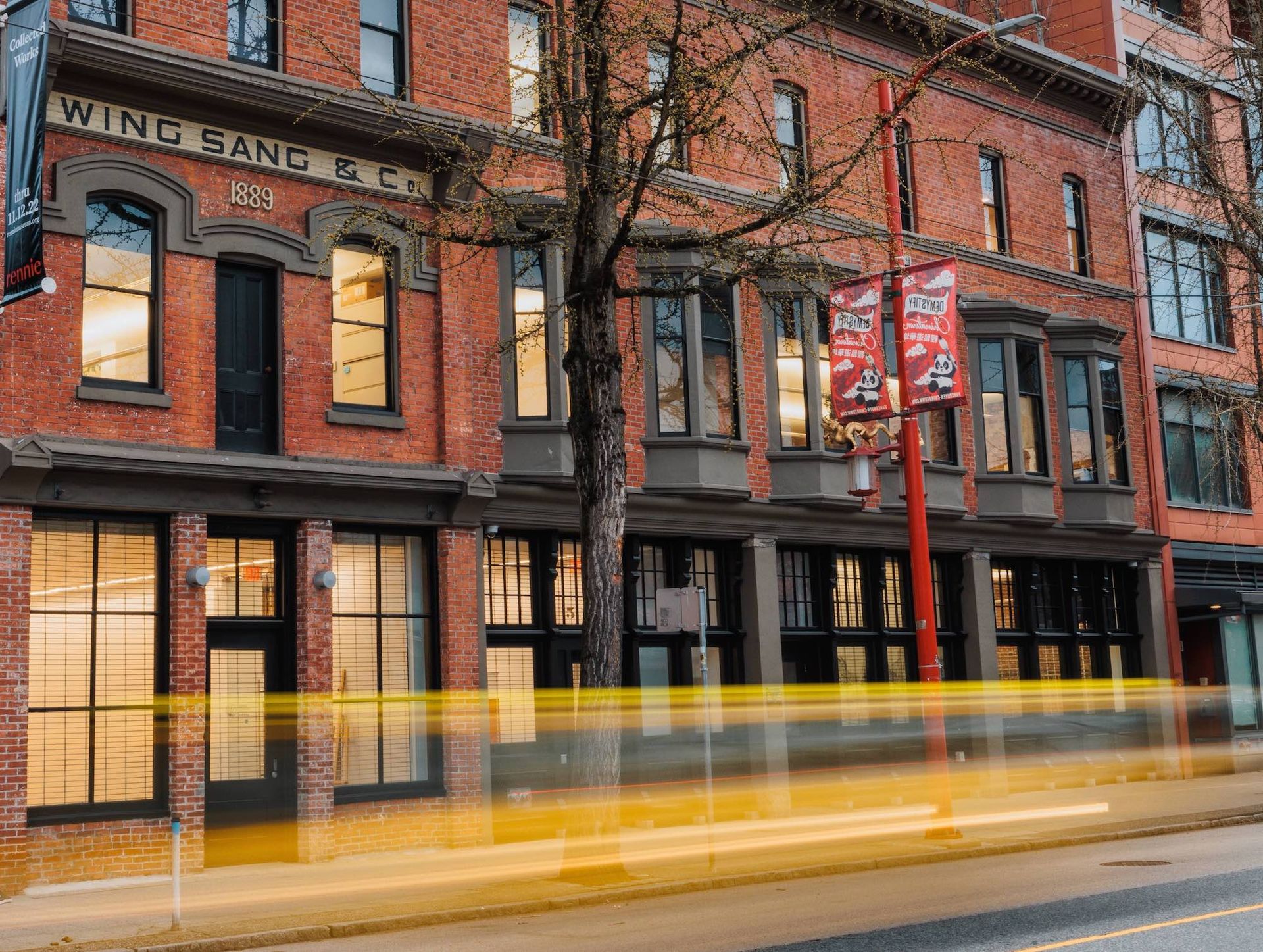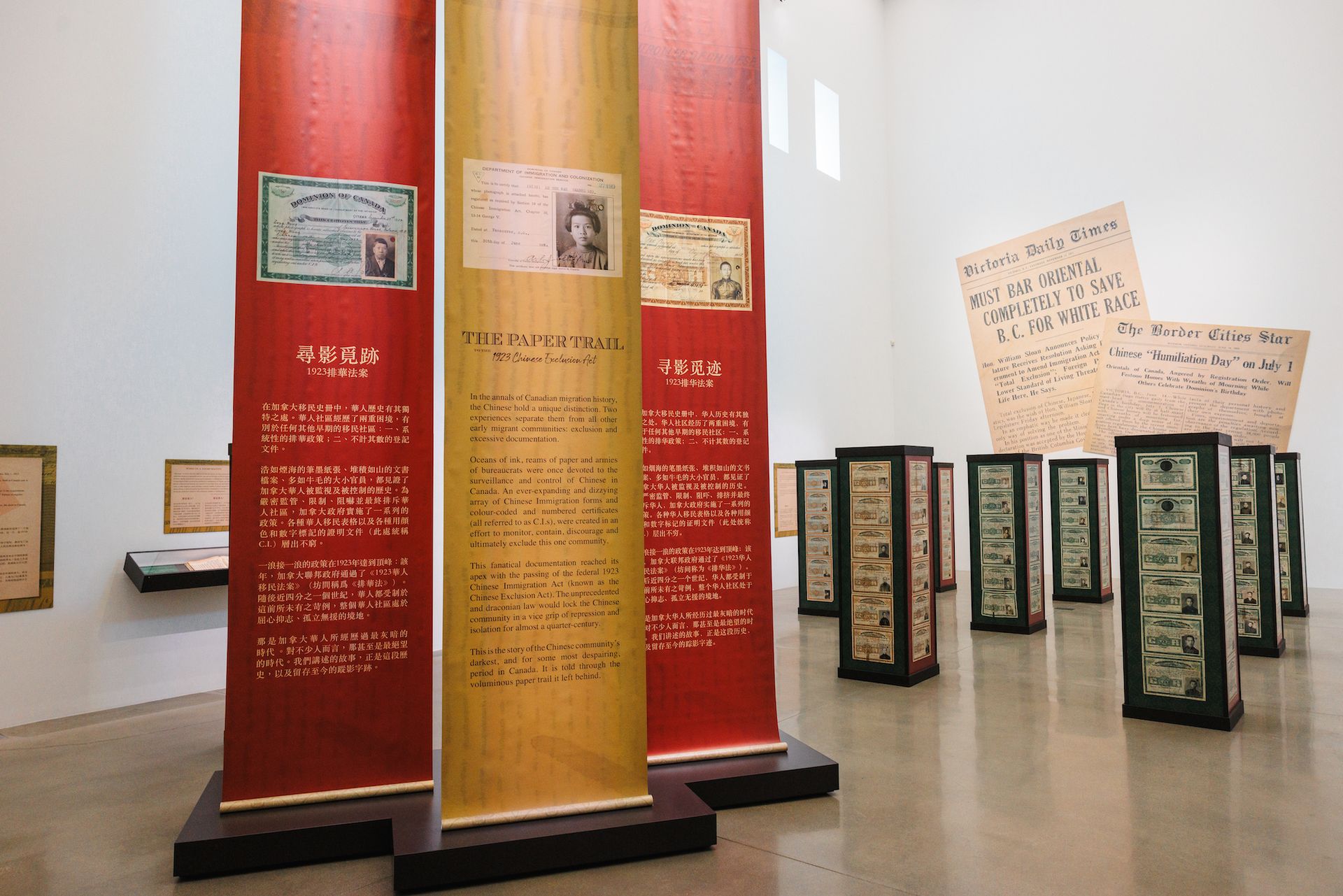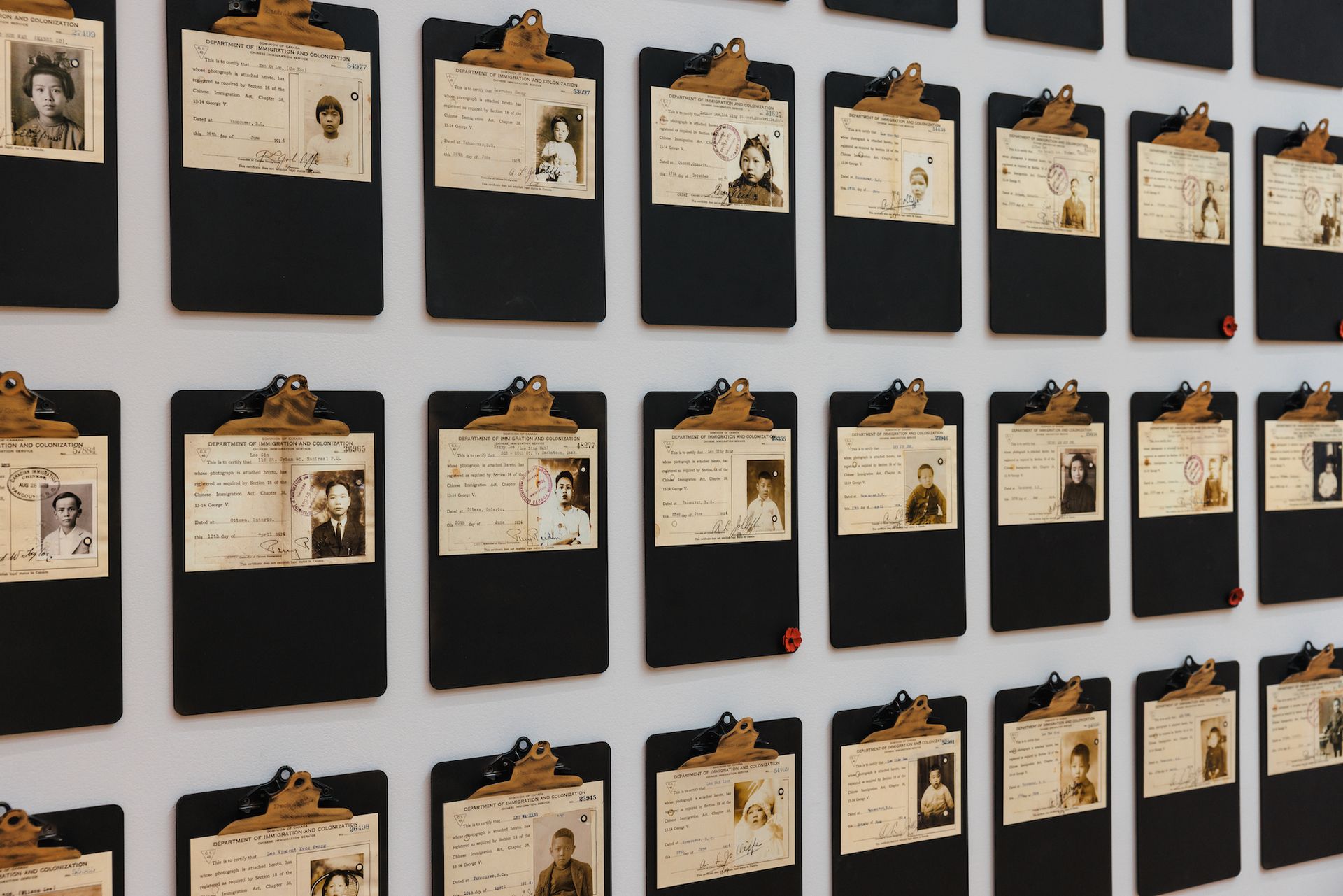When the Chinese Canadian Museum opened the doors to its permanent residence in Vancouver on July 1, there was a sense of both homecoming and historic recognition. The opening marked exactly 100 years since the Chinese Exclusion Act, banning Chinese migration to Canada, which came into force on Canada Day, the country’s national holiday. The inaugural exhibition of the museum, The paper trail of the Chinese Exclusion Act of 1923 (until June 30, 2024), collects the stories and experiences of individual migrants from government archives and community archives.
The new museum is located in the Wing Sang Building, the oldest building in Vancouver’s Chinatown and former residence of Chinese merchant Yip Sang. It was the last home of the Rennie Museum, which featured the collection of real estate developer and philanthropist Bob Rennie. Rennie originally hired local firms Francl Architecture and McFarlane Green Biggar Architecture + Design for a heritage renovation to create exhibition space for his collection and offices, but in February 2022 he announced his foundation would donate $7.8 million CAD ($14 million) to “ensure that the Chinese Canadian Museum is sustainable in its mission”. Grace Wong, Chair of the Chinese Canadian Museum’s Board of Trustees, thanked him “for being such a wonderful guardian of this very special building and its history.”

The Chinese Canadian Museum Ian Kobylanski/Koby Photography
This gift from Rennie to a rapidly gentrifying Chinatown, along with funding from the provincial government, which has officially apologized in 2014 for the “head tax” paid by Chinese migrants to enter the country (the price peaked at C$500 in 1903) — were part of a sort of reparations process, says Melissa Karmen Lee, executive director of the Chinese Canadian Museum. She says that between 1885 and 1923, about 81,000 Chinese immigrants paid the tax, and the total collected was C$23 million. “In current terms, that would be C$1 billion,” she notes. And although the head tax is a federal law, the money went into provincial coffers as immigrants largely arrived on the West Coast. Coincidentally, the Canadian Pacific Railway (CPR) also cost C$23 million, Lee says. “So in essence, the Chinese not only built the railway, they also paid for it.”
The museum’s mission statement formulates its purpose as “to honor the history, contributions and heritage of Chinese Canadians,” but Lee says there will be a variety of programs. “We plan to show a mix of heritage and art exhibits,” she says. “We believe we can showcase the history of Chinese Canadians, but also contemporary culture and art. All of these kinds of exhibits are entry points for visitors to further engage with our mandate to elevate and elevate the voices of Chinese Canadians. Lee says one of his goals is to show that Chinese identity is not “homogeneous or monolithic”. To that end, the ground floor of the museum features a photo wall of Chinese Canadians from an international diaspora – Mauritius, India, Zanzibar and beyond.
On the second floor, The paper trail of the Chinese Exclusion Act of 1923, organized by Catherine Clément, draws heavily on community archives. These include photos in an adjacent area documenting ties between Chinese and First Nations peoples – both groups were considered non-citizens and banned from voting in Canada until 1947 and 1960, respectively – supplemented by video interviews with people like Elder Larry Grant, who has both Chinese and Musqueam ancestry.

Installation view of The paper trail of the Chinese Exclusion Act of 1923 Ian Kobylanski/Koby Photography
“We hope as we move forward that more people will help populate the entire wall,” Lee said. Currently, much of the east wall is taken up by a mural by Marlene Yuen highlighting aspects of Chinese-Canadian life, from elderly people doing tai chi in front of the CN Tower in Toronto to CPR trains. and community cafes.
The paper trail also incorporates hundreds of Chinese immigration certificates – the most ever publicly displayed on a show – all from Chinese Canadian families across the country.
“In Canadian history, the Chinese hold two unique distinctions that separate them from all other early migrant communities: exclusion and excessive documentation,” Clement says. “It is the story of the darkest period of the Chinese community in Canada told through the voluminous paper trail it left behind.”

Installation view of The paper trail of the Chinese Exclusion Act of 1923 Ian Kobylanski/Koby Photography
The strength of the exhibition lies in the revealing details of personal stories that pierce the volume of documents. From a rare single woman who arrived as a housekeeper and was forced to marry an older man, to the story of a Chinese man wrongfully convicted of murdering a white policeman, to stories of men who had wives and families in the country. China spends much of her adult life isolated and alone.
“The stories we uncovered required hundreds of hours of original research,” Clement says. “We scoured the pages of old Chinese and English newspapers, sifted through the archives of clan society, examined personal correspondence, skimmed through coroners’ reports, rummaged through newly released government records, and delved into the recollections of hundreds of families. in all regions of Canada. »
Today, those memories have been expressed in a powerful inaugural exhibit at a new museum that offers timely food for thought, not only on the history of Chinese Canadians, but on issues of national identity and broader membership.
- The paper trail of the Chinese Exclusion Act of 1923until June 30, 2024, Chinese Canadian Museum, Vancouver
